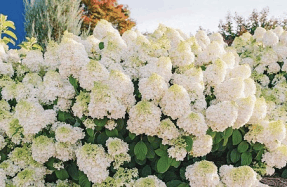Sure Bets for 2020

GREATPLANTS
GreatPlants for the Great Plains, a joint program of the Nebraska Statewide Arboretum and the Nebraska Nursery & Landscape Association, promotes species that are tough, adaptable and beneficial to the environment around them. Many of 2020’s choices are natives that have adapted, along with the wildlife and pollinators they support and rely on, to the changing regional climate and conditions where they evolved.
1 CATALPA
Catalpa speciosa. Tree of the Year. This beautiful tree has showstopper blossoms from May into June, plus large and dramatic leaves and seedpods. White orchid-like flowers look individually painted with dark purple dots and golden yellow smudges leading pollinators to the nectar within. These flowers occur in clusters up to two feet long. The leaves are equally impressive at about a foot long, as are the two-foot seedpods that turn dark brown in fall. Bark of mature trees is deeply ridged and pale gray-brown. Valuable as a shade, flowering and ornamental tree, the adaptable catalpa is designed to survive; its flowers draw daytime pollinators with their markings and nighttime pollinators with their scent. It grows 40 to 70 feet tall and 20 to 50 feet wide. Full sun to part shade; any soil and moisture level. USDA Zones 4–8.
2 ‘DOMINGO’ PINE
Pinus strobus ×ayacahuite ‘Domingo’. Evergreen of the Year. A hybrid of two species native to much of eastern North America, ‘Domingo’ pine is densely pyramidal in shape and it has attractive blue-green foliage that stands out in the landscape. The bluish cast of the needles complements the shaggy gray bark. A fast-grower that rarely needs pruning, it can handle urban pollution and placement. It’s an exceptional conifer prized for its toughness, color, form and texture. It grows 50 to 70 feet tall and 30 to 50 feet wide. Full sun; any well-drained soil; dry to medium moisture. Zones 4–7.

3 ELDERBERRY
. Shrub of the Year. Elderberry is a graceful accent shrub with broad clusters of white flowers May into June. The nutritious, dark purple fruits that ripen in late summer are useful for jellies, pies, syrup and wine. It’s useful for birds as well; it has been cited as a top bird-garden plant by Audubon and similar
You’re reading a preview, subscribe to read more.
Start your free 30 days



